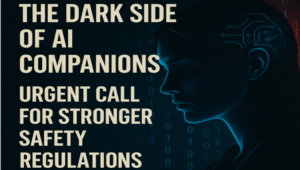2024 will be a watershed moment for the technology industry, as it will see the introduction and evolution of multiple disruptive technologies that will define business and society’s future. These trends, ranging from generative AI to quantum computing, 6G to sustainable technology, will present new opportunities and challenges for innovation, growth, and change.
- AI and GenAI:
 Artificial intelligence (AI) is a branch of computer science that seeks to develop robots and systems capable of doing activities that ordinarily require human intelligence, such as reasoning, learning, and decision-making. Generative AI is a subset of AI that can generate new material based on existing data or user input, such as photos, text, music, or code.
Artificial intelligence (AI) is a branch of computer science that seeks to develop robots and systems capable of doing activities that ordinarily require human intelligence, such as reasoning, learning, and decision-making. Generative AI is a subset of AI that can generate new material based on existing data or user input, such as photos, text, music, or code. - Robotic Process Automation (RPA):
 RPA is a software technology that automates repetitive and rule-based operations that would otherwise require human interaction. By interacting with numerous applications and systems, RPA may simulate human behaviors like clicking, typing, copying, and pasting. RPA has the potential to increase efficiency, accuracy, compliance, and production while decreasing costs, errors, and human workload.
RPA is a software technology that automates repetitive and rule-based operations that would otherwise require human interaction. By interacting with numerous applications and systems, RPA may simulate human behaviors like clicking, typing, copying, and pasting. RPA has the potential to increase efficiency, accuracy, compliance, and production while decreasing costs, errors, and human workload. - Smart Devices:
 Smart devices are electronic gadgets that can communicate with other devices or networks using wireless protocols such as Bluetooth, Wi-Fi, or 5G and operate interactively and autonomously. Smart devices may gather, process, and communicate data and respond to user requests or changes in the environment.
Smart devices are electronic gadgets that can communicate with other devices or networks using wireless protocols such as Bluetooth, Wi-Fi, or 5G and operate interactively and autonomously. Smart devices may gather, process, and communicate data and respond to user requests or changes in the environment. - 6G Technology:
 6G is the next generation of wireless communication technology, and it is projected to provide faster speeds, reduced latency, greater capacity, and more excellent dependability than 5G. New applications and services, including holographic communication, immersive virtual reality, and omnipresent artificial intelligence, will also be possible with 6G.
6G is the next generation of wireless communication technology, and it is projected to provide faster speeds, reduced latency, greater capacity, and more excellent dependability than 5G. New applications and services, including holographic communication, immersive virtual reality, and omnipresent artificial intelligence, will also be possible with 6G. - Security and Trust:
 Security and trust are critical components of every system or service that deals with data, information, or communication. The protection of data and systems from illegal access, use, modification, or disclosure is referred to as security. Users’ trust in data and systems’ dependability, integrity, and validity is called trust. Encryption, authentication, authorization, auditing, and compliance are all approaches for achieving security and trust.
Security and trust are critical components of every system or service that deals with data, information, or communication. The protection of data and systems from illegal access, use, modification, or disclosure is referred to as security. Users’ trust in data and systems’ dependability, integrity, and validity is called trust. Encryption, authentication, authorization, auditing, and compliance are all approaches for achieving security and trust. - Quantum computing:
 Quantum computing is a technique that uses quantum mechanics principles to accomplish computations beyond traditional computers’ capabilities. Quantum computers rely on qubits, which can exist in two states simultaneously, and entanglement, which allows qubits to influence each other over long distances.
Quantum computing is a technique that uses quantum mechanics principles to accomplish computations beyond traditional computers’ capabilities. Quantum computers rely on qubits, which can exist in two states simultaneously, and entanglement, which allows qubits to influence each other over long distances. - Extended Reality (XR):
 Extended reality (XR) is an umbrella term for any technology that somewhat transforms reality by adding digital aspects to the physical or real-world environment. Virtual Reality (VR), which immerses users in a computer-generated virtual environment; Augmented Reality (AR), which overlays virtual content on the actual world; and Mixed Reality (MR), which incorporates characteristics of both VR and AR, are all part of it.
Extended reality (XR) is an umbrella term for any technology that somewhat transforms reality by adding digital aspects to the physical or real-world environment. Virtual Reality (VR), which immerses users in a computer-generated virtual environment; Augmented Reality (AR), which overlays virtual content on the actual world; and Mixed Reality (MR), which incorporates characteristics of both VR and AR, are all part of it. - 3D technology:
 3D technology is a technology that makes or displays three-dimensional objects or images, giving the illusion of depth and realism. 3D technology can be used for a variety of purposes, including 3D printing (which creates physical objects from digital models), 3D scanning (which captures the shape and appearance of real objects), 3D modeling (which creates and manipulates digital objects), and 3D visualization (which renders and displays 3D objects or scenes).
3D technology is a technology that makes or displays three-dimensional objects or images, giving the illusion of depth and realism. 3D technology can be used for a variety of purposes, including 3D printing (which creates physical objects from digital models), 3D scanning (which captures the shape and appearance of real objects), 3D modeling (which creates and manipulates digital objects), and 3D visualization (which renders and displays 3D objects or scenes). - Geonomics:
 Geonomics is the application of genomics, the study of an organism’s entire set of genes, to the science of geography, the study of the earth’s physical properties and human activities. Geonomics can be used to investigate the genetic diversity, evolution, adaption, and distribution of diverse species across distinct locations and conditions.
Geonomics is the application of genomics, the study of an organism’s entire set of genes, to the science of geography, the study of the earth’s physical properties and human activities. Geonomics can be used to investigate the genetic diversity, evolution, adaption, and distribution of diverse species across distinct locations and conditions. - Datafication:
 Datafication converts non-digital data into digital data that can be saved, analyzed, and used for various purposes. Datafication can be used to improve social relationships, personal behaviors, physical settings, and business operations. Datafication has the potential to provide new insights, innovations, and opportunities while also posing issues and concerns in areas such as privacy, security, and ethics.
Datafication converts non-digital data into digital data that can be saved, analyzed, and used for various purposes. Datafication can be used to improve social relationships, personal behaviors, physical settings, and business operations. Datafication has the potential to provide new insights, innovations, and opportunities while also posing issues and concerns in areas such as privacy, security, and ethics.


 Artificial intelligence (AI) is a branch of computer science that seeks to develop robots and systems capable of doing activities that ordinarily require human intelligence, such as reasoning, learning, and decision-making. Generative AI is a subset of AI that can generate new material based on existing data or user input, such as photos, text, music, or code.
Artificial intelligence (AI) is a branch of computer science that seeks to develop robots and systems capable of doing activities that ordinarily require human intelligence, such as reasoning, learning, and decision-making. Generative AI is a subset of AI that can generate new material based on existing data or user input, such as photos, text, music, or code. RPA is a software technology that automates repetitive and rule-based operations that would otherwise require human interaction. By interacting with numerous applications and systems, RPA may simulate human behaviors like clicking, typing, copying, and pasting. RPA has the potential to increase efficiency, accuracy, compliance, and production while decreasing costs, errors, and human workload.
RPA is a software technology that automates repetitive and rule-based operations that would otherwise require human interaction. By interacting with numerous applications and systems, RPA may simulate human behaviors like clicking, typing, copying, and pasting. RPA has the potential to increase efficiency, accuracy, compliance, and production while decreasing costs, errors, and human workload. Smart devices are electronic gadgets that can communicate with other devices or networks using wireless protocols such as Bluetooth, Wi-Fi, or 5G and operate interactively and autonomously. Smart devices may gather, process, and communicate data and respond to user requests or changes in the environment.
Smart devices are electronic gadgets that can communicate with other devices or networks using wireless protocols such as Bluetooth, Wi-Fi, or 5G and operate interactively and autonomously. Smart devices may gather, process, and communicate data and respond to user requests or changes in the environment. 6G is the next generation of wireless communication technology, and it is projected to provide faster speeds, reduced latency, greater capacity, and more excellent dependability than 5G. New applications and services, including holographic communication, immersive virtual reality, and omnipresent artificial intelligence, will also be possible with 6G.
6G is the next generation of wireless communication technology, and it is projected to provide faster speeds, reduced latency, greater capacity, and more excellent dependability than 5G. New applications and services, including holographic communication, immersive virtual reality, and omnipresent artificial intelligence, will also be possible with 6G. Security and trust are critical components of every system or service that deals with data, information, or communication. The protection of data and systems from illegal access, use, modification, or disclosure is referred to as security. Users’ trust in data and systems’ dependability, integrity, and validity is called trust. Encryption, authentication, authorization, auditing, and compliance are all approaches for achieving security and trust.
Security and trust are critical components of every system or service that deals with data, information, or communication. The protection of data and systems from illegal access, use, modification, or disclosure is referred to as security. Users’ trust in data and systems’ dependability, integrity, and validity is called trust. Encryption, authentication, authorization, auditing, and compliance are all approaches for achieving security and trust. Quantum computing is a technique that uses quantum mechanics principles to accomplish computations beyond traditional computers’ capabilities. Quantum computers rely on qubits, which can exist in two states simultaneously, and entanglement, which allows qubits to influence each other over long distances.
Quantum computing is a technique that uses quantum mechanics principles to accomplish computations beyond traditional computers’ capabilities. Quantum computers rely on qubits, which can exist in two states simultaneously, and entanglement, which allows qubits to influence each other over long distances. Extended reality (XR) is an umbrella term for any technology that somewhat transforms reality by adding digital aspects to the physical or real-world environment. Virtual Reality (VR), which immerses users in a computer-generated virtual environment; Augmented Reality (AR), which overlays virtual content on the actual world; and Mixed Reality (MR), which incorporates characteristics of both VR and AR, are all part of it.
Extended reality (XR) is an umbrella term for any technology that somewhat transforms reality by adding digital aspects to the physical or real-world environment. Virtual Reality (VR), which immerses users in a computer-generated virtual environment; Augmented Reality (AR), which overlays virtual content on the actual world; and Mixed Reality (MR), which incorporates characteristics of both VR and AR, are all part of it. 3D technology is a technology that makes or displays three-dimensional objects or images, giving the illusion of depth and realism. 3D technology can be used for a variety of purposes, including 3D printing (which creates physical objects from digital models), 3D scanning (which captures the shape and appearance of real objects), 3D modeling (which creates and manipulates digital objects), and 3D visualization (which renders and displays 3D objects or scenes).
3D technology is a technology that makes or displays three-dimensional objects or images, giving the illusion of depth and realism. 3D technology can be used for a variety of purposes, including 3D printing (which creates physical objects from digital models), 3D scanning (which captures the shape and appearance of real objects), 3D modeling (which creates and manipulates digital objects), and 3D visualization (which renders and displays 3D objects or scenes). Geonomics is the application of genomics, the study of an organism’s entire set of genes, to the science of geography, the study of the earth’s physical properties and human activities. Geonomics can be used to investigate the genetic diversity, evolution, adaption, and distribution of diverse species across distinct locations and conditions.
Geonomics is the application of genomics, the study of an organism’s entire set of genes, to the science of geography, the study of the earth’s physical properties and human activities. Geonomics can be used to investigate the genetic diversity, evolution, adaption, and distribution of diverse species across distinct locations and conditions. Datafication converts non-digital data into digital data that can be saved, analyzed, and used for various purposes. Datafication can be used to improve social relationships, personal behaviors, physical settings, and business operations. Datafication has the potential to provide new insights, innovations, and opportunities while also posing issues and concerns in areas such as privacy, security, and ethics.
Datafication converts non-digital data into digital data that can be saved, analyzed, and used for various purposes. Datafication can be used to improve social relationships, personal behaviors, physical settings, and business operations. Datafication has the potential to provide new insights, innovations, and opportunities while also posing issues and concerns in areas such as privacy, security, and ethics.












